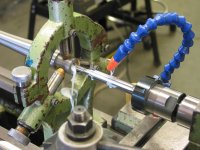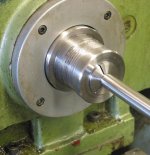6shooter1
Plastic
- Joined
- Jul 12, 2011
- Location
- Western Australia
Here's a silly question......but the answer will help me greatly. When chambering between centres using a steady rest, won't the barrel have a brass ring on it from the rest? I have rechambered one of my barrels before (blued) and the steady rest removed the blue. My lathe won't allow me to chamber thru the spindle so I have to work with what I've got. Any advice would be appreciated....barrel set-up, need to dial-in etc.









 Many thanks
Many thanks